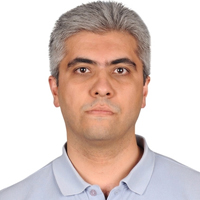Investigation of radiation attenuation parameters of some drugs used in Chemotherapy in Wide Energy Region
Published on: 4th August, 2018
OCLC Number/Unique Identifier: 7844574123
Objectives: The aim of this study is to compute the radiation attenuation parameters such as mass attenuation coefficient, linear attenuation coefficient, half value layer, mean free path, and effective atomic number for some selected chemotherapy drugs such as Lomustine, Cisplatin, Carmustine, and Chlorambucil in the energy range from 1 keV to 100 GeV.
Materials and Methods: The mass attenuation coefficients were calculated with the help of WinXCOM program. Using the obtained mass attenuation coefficients, other parameters such as linear attenuation coefficient, half value layer, mean free path, and effective atomic number were derived.
Results: It is observed that the variations of these parameters with respect to the photon energy show changes in different energy regions. According to the obtained results, Cisplatin has the highest mass attenuation coefficient, linear attenuation coefficient and effective atomic number results among the selected chemotherapy drugs. Moreover, Chlorambucil has the highest half value layer and mean free path results among the selected chemotherapy drugs.
Conclusion: The results of this study are useful for applied science fields such as radiation physics, pharmacology, and medical physics. These results may be useful when the selected chemotherapy drugs are used together with radiology.
In the pursuit of a new route on acute myeloid leukemia treatment
Published on: 29th December, 2021
Acute myeloid leukaemia (AML) is the forefront disorder of the bone marrow among others that disrupt the normal production of blood cells and platelets. The bone marrow microenvironment or the bone marrow niche (BM niche) that orchestrates the proliferation and survival of Leukaemic stem cells (LSC) is the reason for relapse after complete remission and also chemotherapy drug resistance. As for most cancers oxidative phosphorylation, a fundamental mitochondrial process of energy production, is under focus for the treatment of AML and a novel strategy of targeting heat shock proteins appears as a promising route for further research.




